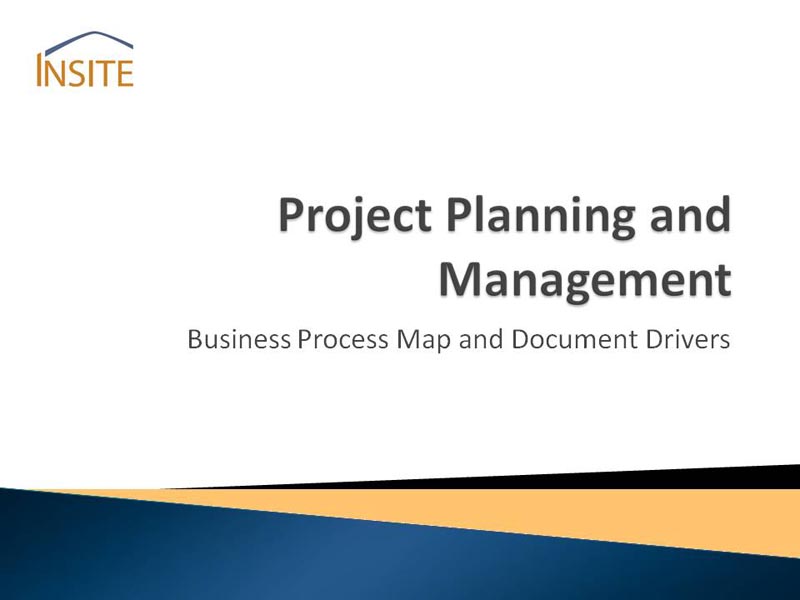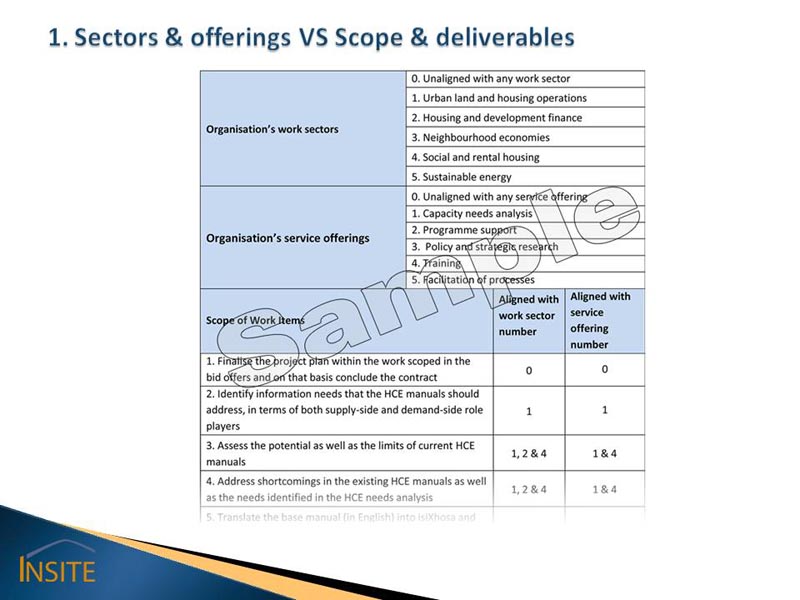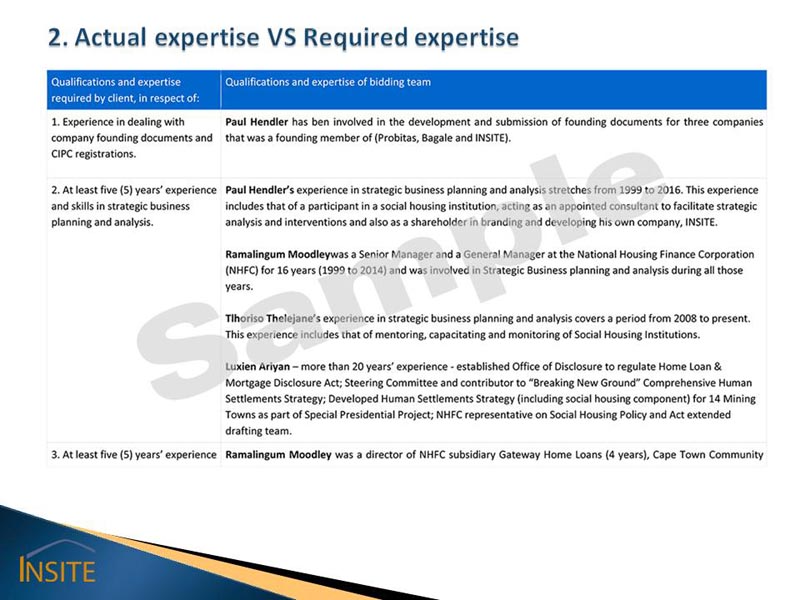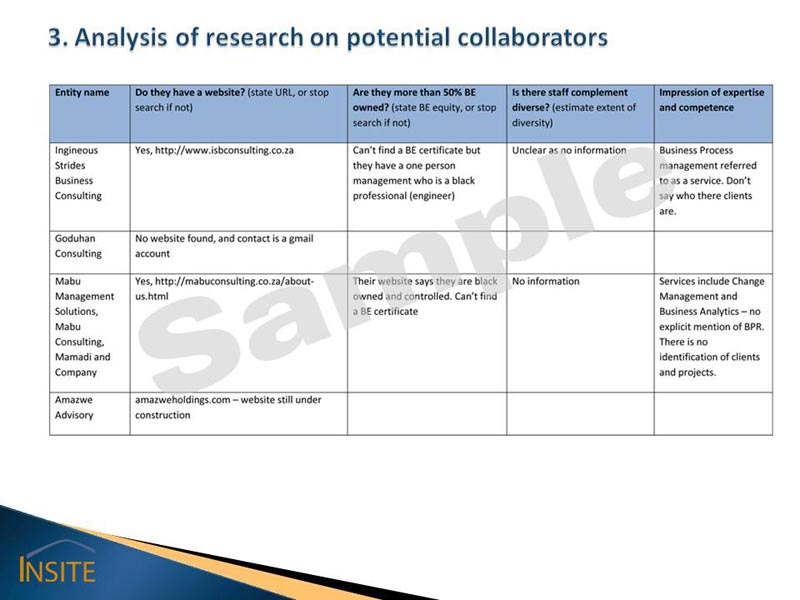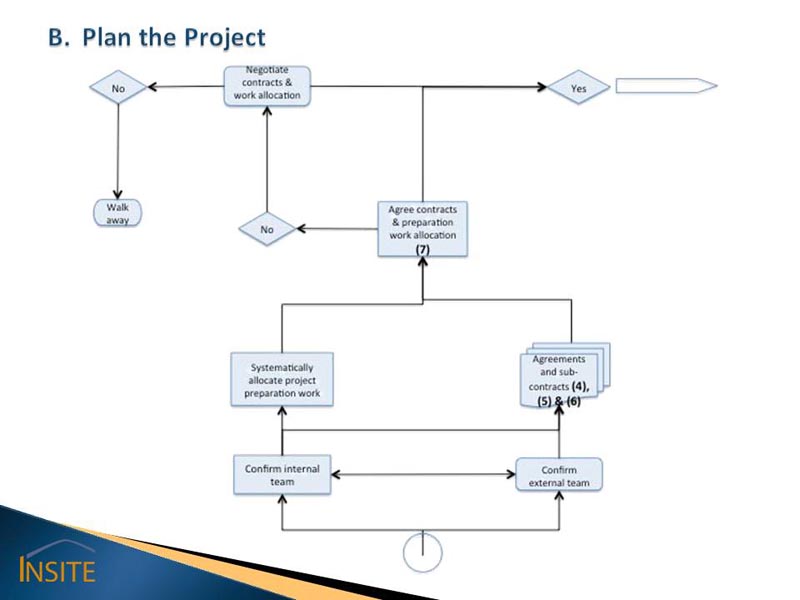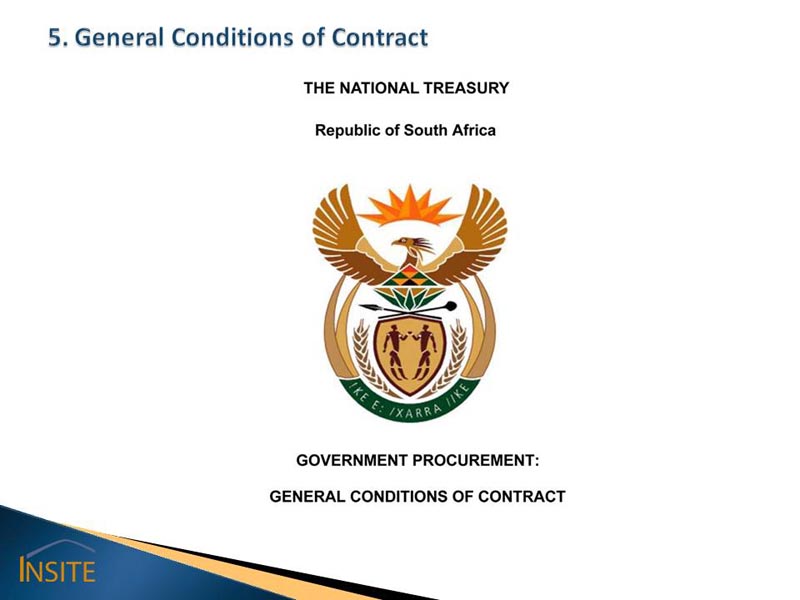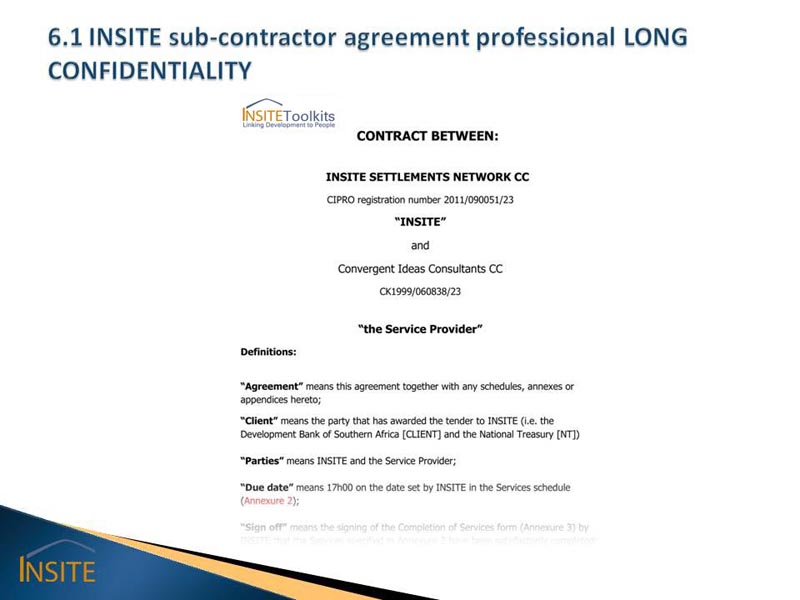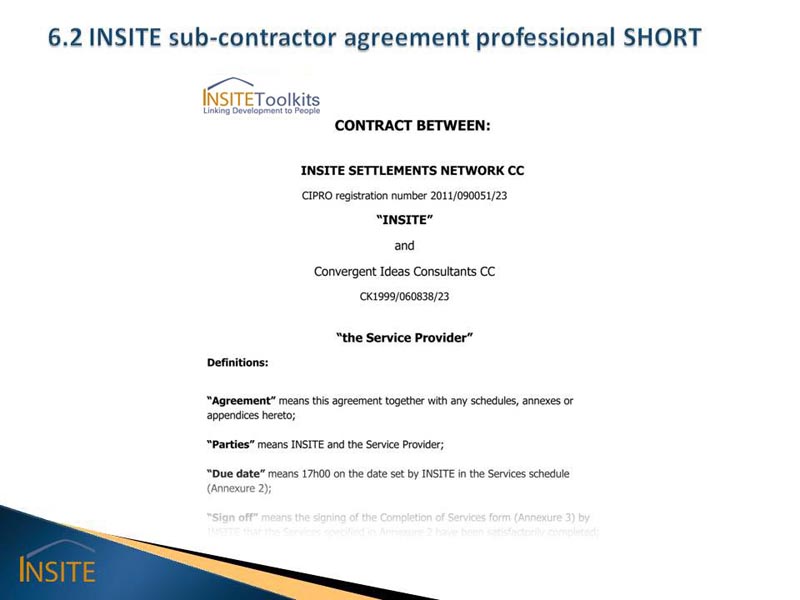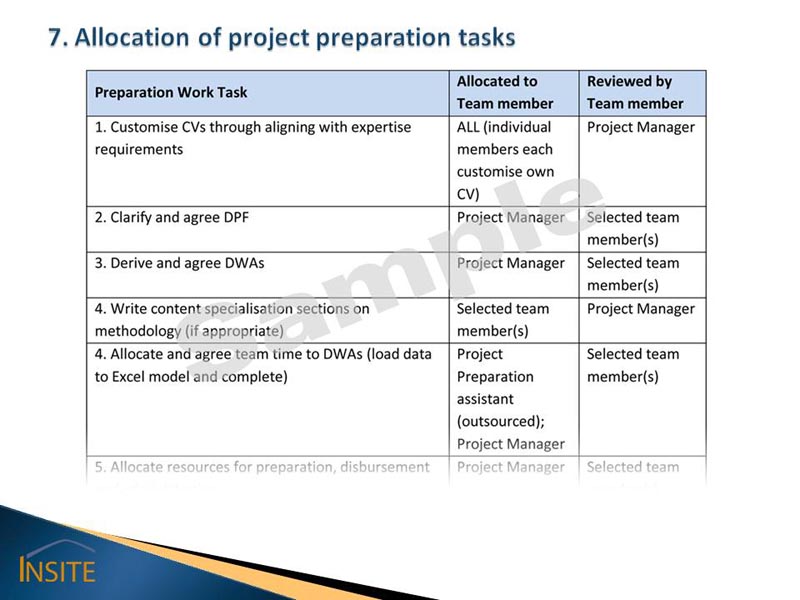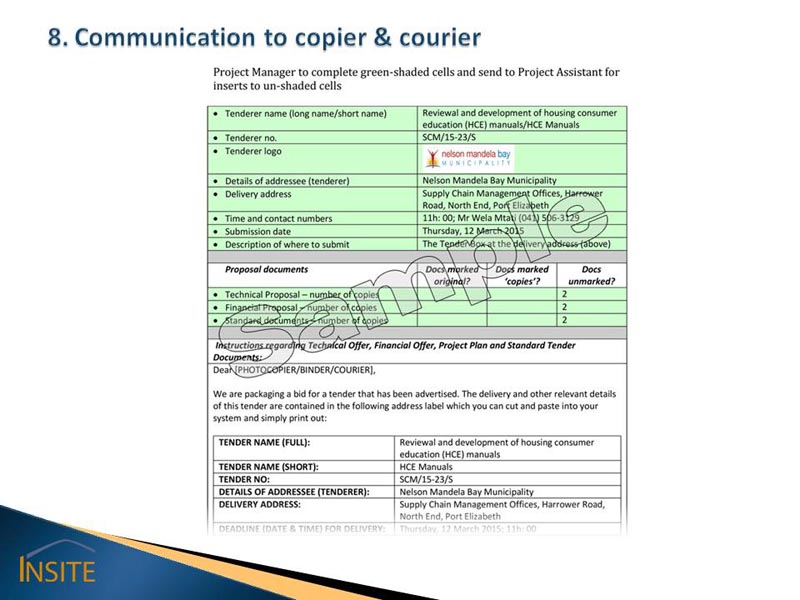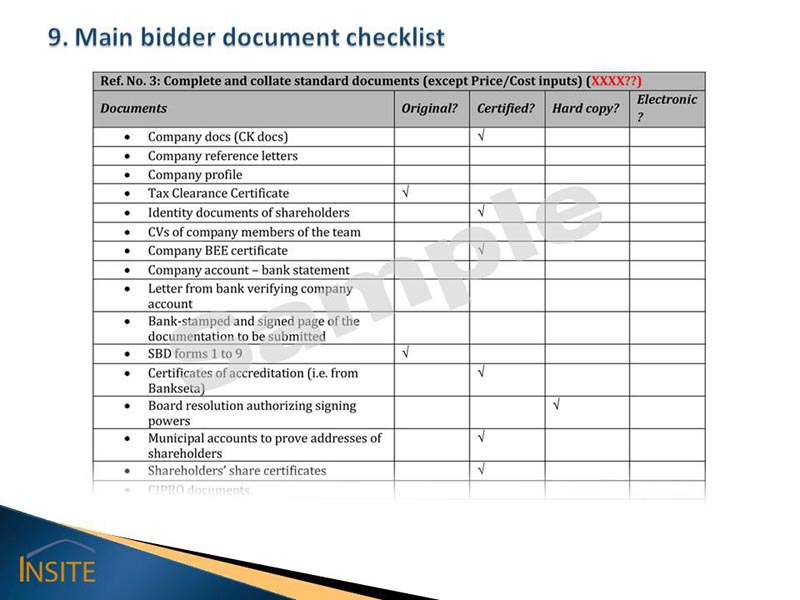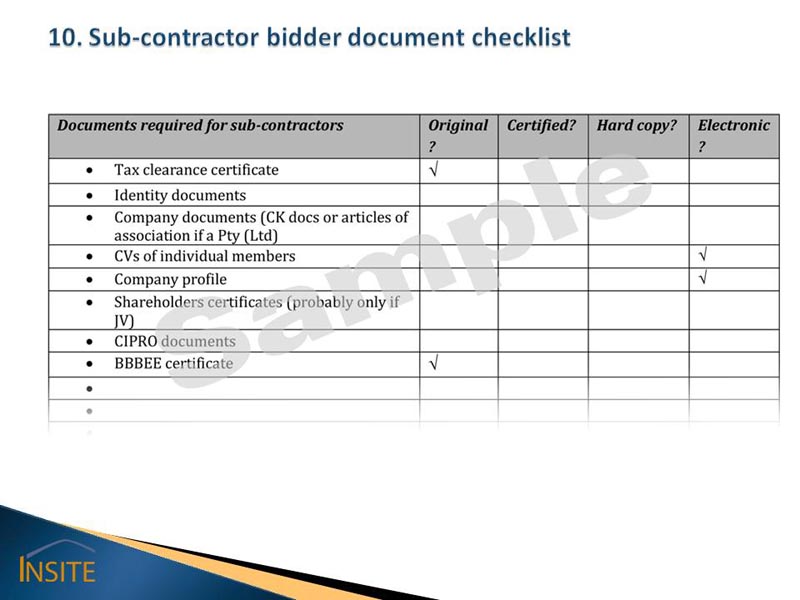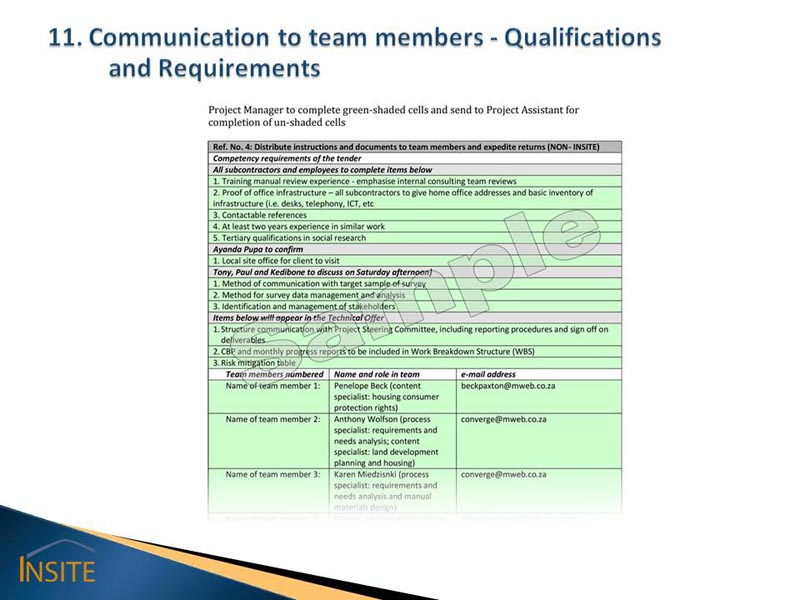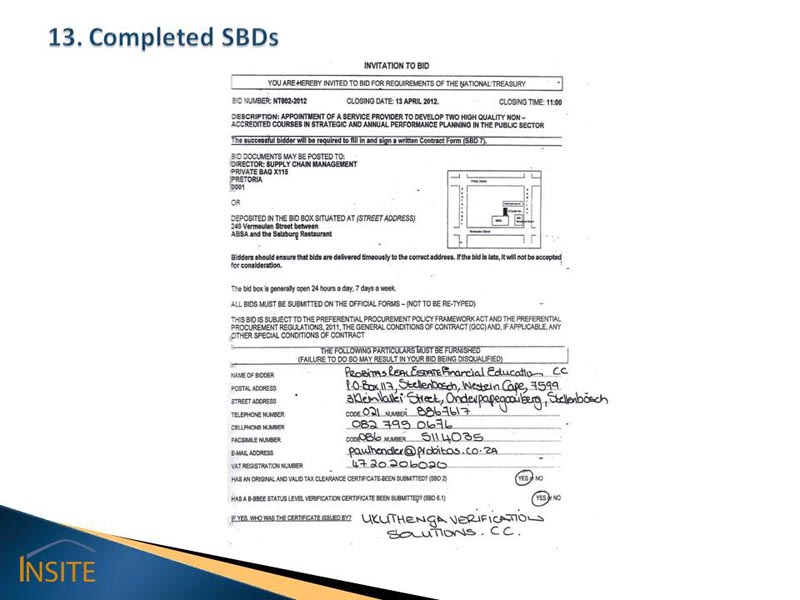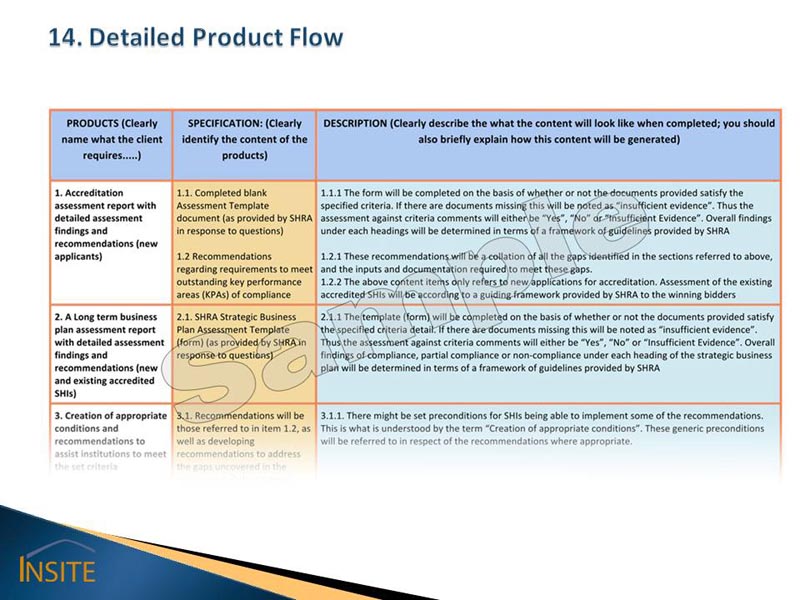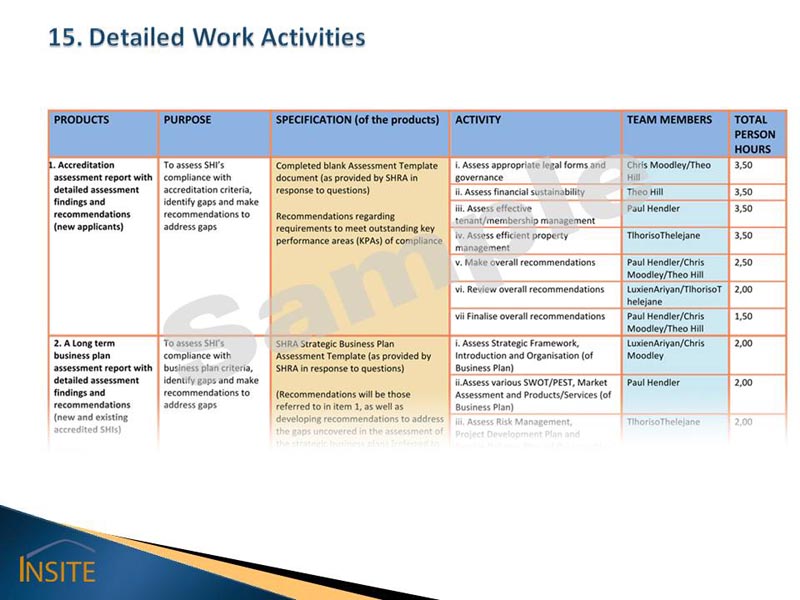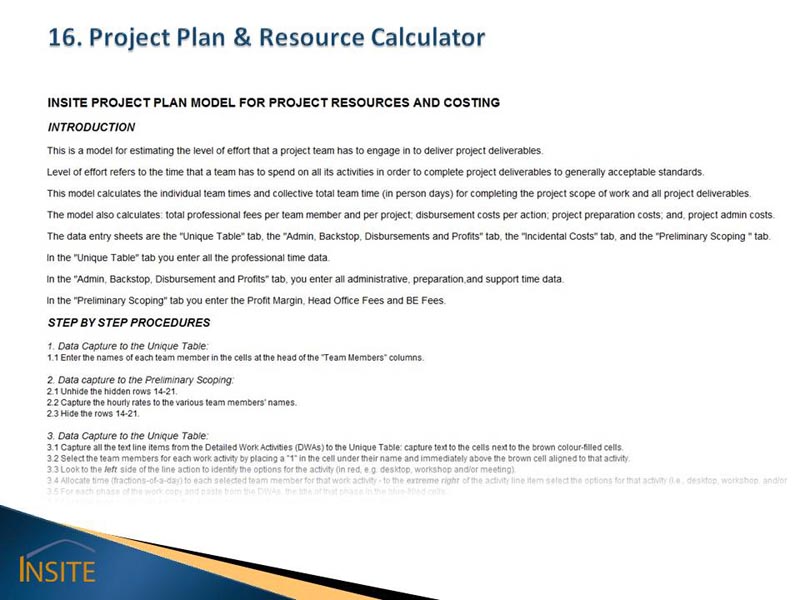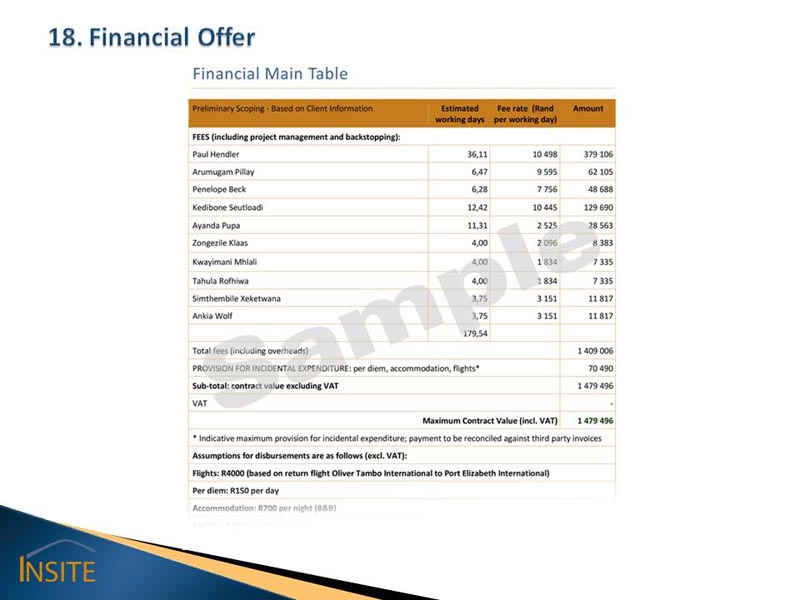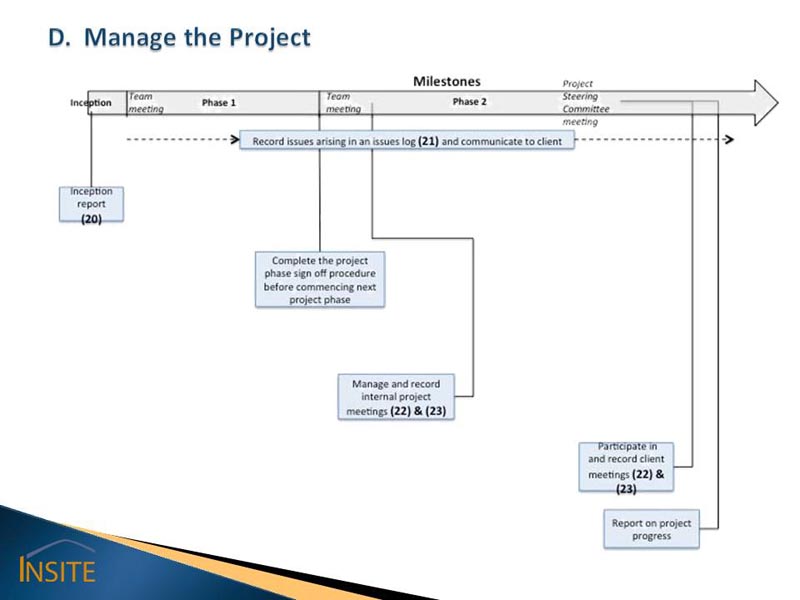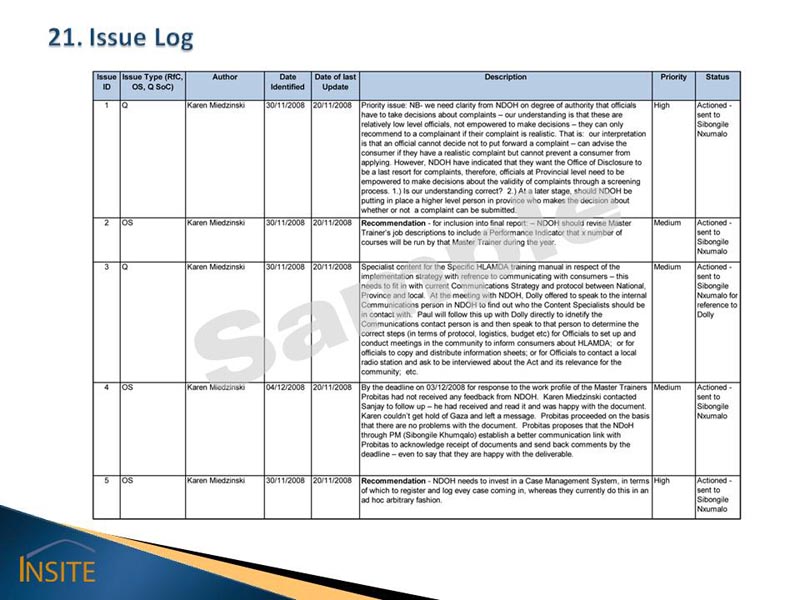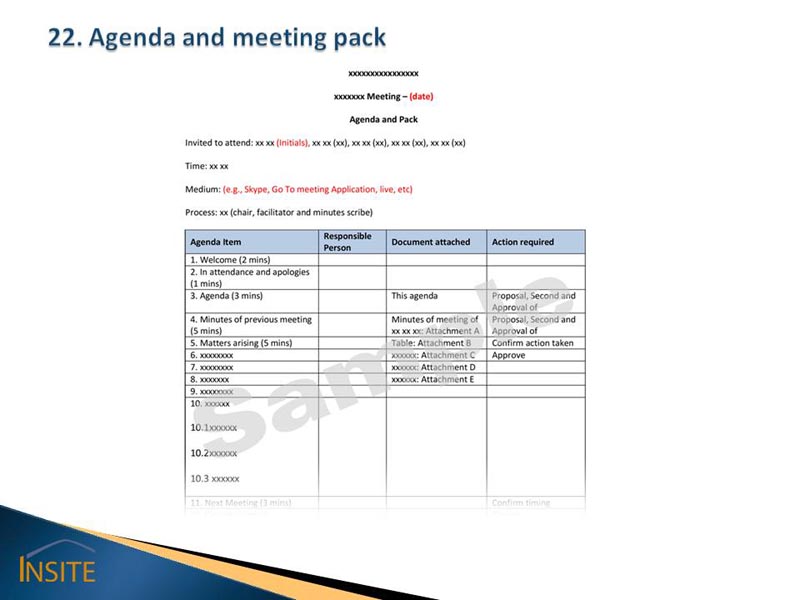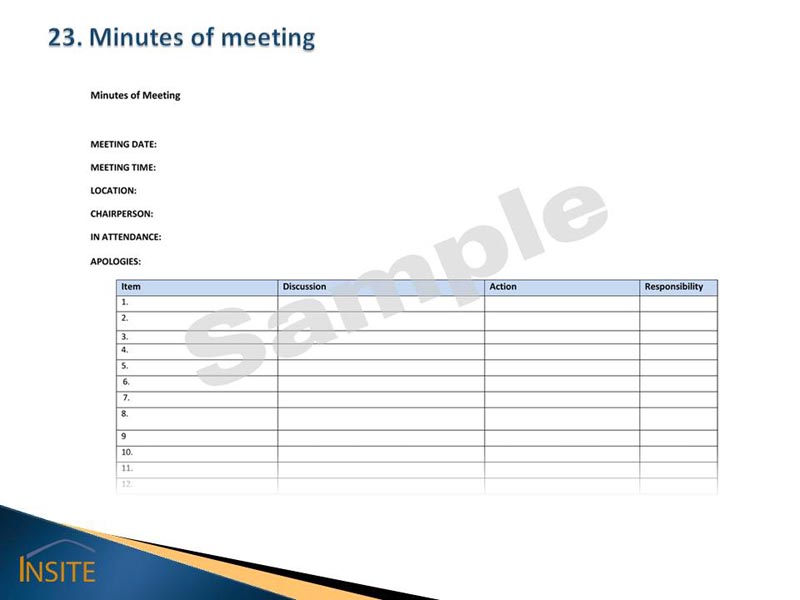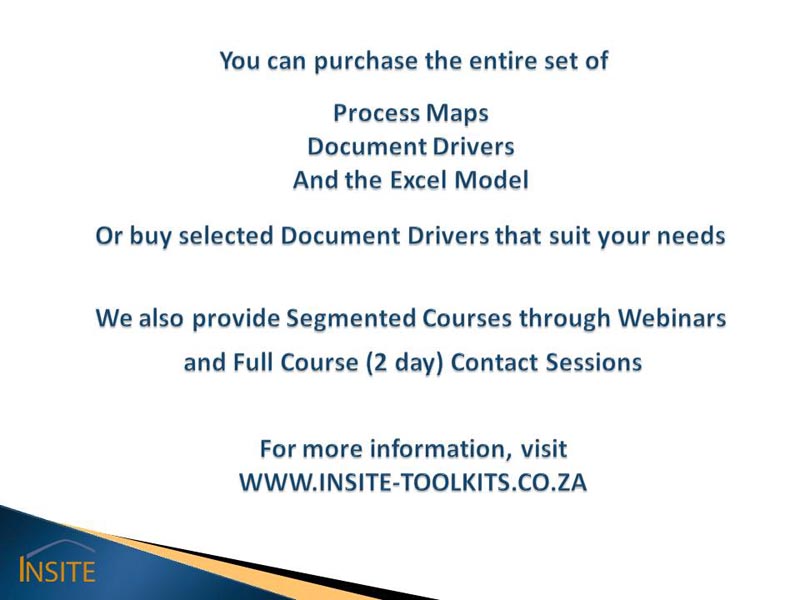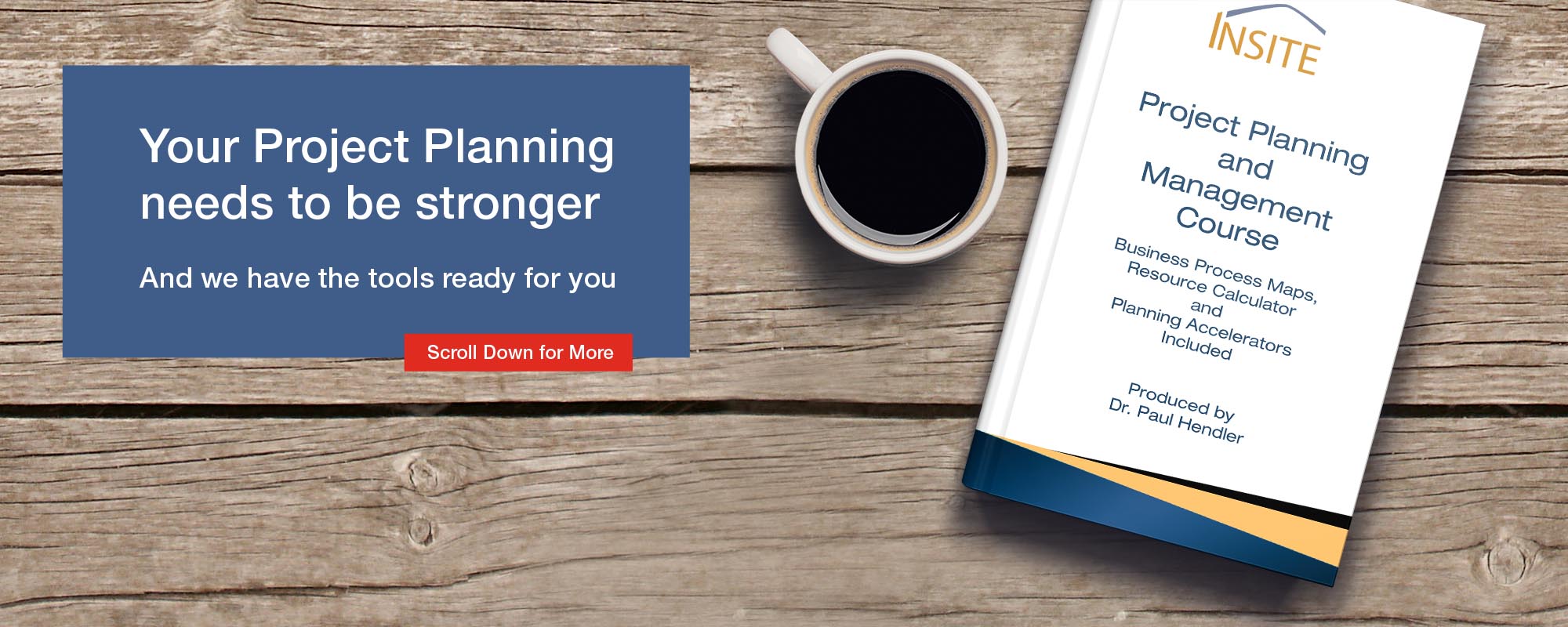
- Does your organisation bid for government tender or other commercial work?
- Do you need a framework to decide whether to bid, how to plan and complete your bid and then manage the project?
Governments generally expect standard sections you should include.
You need to be clear about what will disqualify you and what is essential to include.
You also need to identify appropriate team members and estimate time required. And finally, should you win the bid; you need to know how to manage your project and your client.
Anecdotal evidence suggests that many organisations lack the above understanding and expertise.
For more than a decade I have been planning and implementing bids and successfully managing projects.
My colleagues and I developed and implemented a tender bid planning and project management system. It has been fine-tuned over 12 years and we are ready to share it in the variety of ways described on this site.
Our generic project planning and management training course should be useful for professionals, private and community-based organisations that bid for public tenders, and for public officials responsible for projects.

I have trained and qualified as an outcomes-based trainer/facilitator. I use a variety of techniques and methods for interactive learning exercises. I have experience facilitating learning workshops since 2005. Participants in my workshops are active in the learning process. Each module sets clear outcomes. At the conclusion of the module we reflect on what learning and skills we achieved.
I have also trained and qualified as an outcomes-based assessor. I structure assessment exercises for each assignment. As the course unfolds participants check their progress.
I have 12 years experience in bidding for and managing public tender projects. I developed a project planning and project management system for this. I have tested this system through practice. I know that it works. I have refined it over time. I am confident to share this with you. Using this system, you will improve planning and managing your projects.
I combine training methods with content expertise. The outcome is an effective Project Planning and Management course.
The Video Slides and Script
Click on any slide to view in full size as a slide show.
Slide 1
Hi, I’m Paul Hendler. I developed and implemented a Project Planning and Management System over the past 12 years. It keeps you within project budget and timelines and prevents scope creep. I will walk you through the business process.
Slide 2
The first phase is “Decide to do a Project”. There are three key decision-making points here. A document drives each decision.
Slide 3
There is a simple but effective matrix to complete, to clarify whether your work sectors and services offerings align with the advertised scope of work and required deliverables.
Slide 4
Similarly we use a matrix to make explicit that our expertise meets the expertise required.
Slide 5
And finally, we have a simple but powerful method for recording our assessment of potential collaborators.
Slide 6
You might decide not to do a potential project. But if you decide positively, the next phase is “Plan the Project”. Here the crucial decisions are around agreements and sub-contracts with team members, and then preparing the allocation of project preparation work.
Slide 7
First you and your team need to set out a protocol for working together – it’s called a Team Operating Agreement, or TOA. This ensures there are no critical misunderstandings when you are deep into the project work and under deadline pressure ….
Slide 8
Every project has a Client who pays the project costs. In this system it’s the SA Government. We developed it through tendering and managing projects for various government spheres. Your client could be a private organisation, in which case they will have a unique contract. The National Treasury’s General Conditions of Contract, or GCC, identifies specific risks that are traded onto to you and your team.
Slide 9
You need to trade these risks down onto your sub-contractors. You do this through a sub-contract agreement with your team members. This one covers lengthy clauses governing intellectual property and confidentiality ….
Slide 10
And this one is a shorter and simpler sub-contract ……… Which type of subcontract you use depends on the type of main contract you sign. The key issue is that you have traded down your risks onto your sub-contractors.
Slide 11
Once you have agreed sub-contract you allocate project preparation tasks across your team. This is to avoid the burden of project planning falling on the shoulders of only one or two people ….
Slide 12
As a team you have decided to bid for the advertised project. You now are ready to do the major work, which is “Developing the Project Plan”. Here there are four key Decision-making Points. 12 documents drive these decisions.
Slide 13
Communicate clearly to your team members as well as the photocopier and courier, what is expected of them in order to complete the plan, package the bid and submit the project proposal. This is a standard document for communicating instructions to the photocopier…… Don’t leave this for the last minute. This way you mitigate the risk of mistakes ….
Slide 14
As the main bidder you need to identify all the documents required of yourselves. This checklist will ensure that you do not omit any.
Slide 15
Likewise, your sub-contractors need to have a checklist of all the documentation required of them ….
Slide 16
When communicating with your sub-contractors, you need to give them clear instructions what documents they should submit and also how they should customise their CVs. This is a generic e-mail message which has been customised for a specific tender that we bid for ….
Slide 17
And here is a sample of a CV that was customised for that tender ….
Slide 18
If you are submitting a bid to a SA Government Client, then you should start completing the Standard Bid Documents (or SBDs). Pictured here is a sample of the front page of a completed SBD1 document …. Usually there are nine SBDs …. Don’t leave these SBDs for last-minute completion. A mistake here can result in your disqualification ….
Slide 19
Now develop the Detailed Product Flow, or DPF, a list of all the products you have to deliver to the client. Your entire project team needs to review the DPF before you finalise it.
Slide 20
Having finalised the DPF you develop the Detailed Work Activities, or DWAs. This is the scope of work. All team members should review the DWAs before you finalise them ….
Slide 21
Now allocate professional hourly rates and person hours to each team member for the DWAs allocated to them. Use our Project Plan and Resource Calculator (Excel model). Enter travel, accommodation and subsistence costs, project preparation and administration costs, finders fees, BE fees, head office fees, individual profit margins and VAT. The slide shows the front page of instructions in the first tab of the Excel model ….
Slide 22
Next assemble the Technical Offer by cutting and pasting the relevant information into a preformatted Technical Offer template. This slide shows a section of the Technical Offer that shows the qualifications and project role of each team member in a bid ….
Slide 23
From the Excel Resource Calculator cut and paste the financial resources allocated to each phase as well as as to each member of the project team. This slide shows the charge out rate and costs for each team member, disbursements and VAT in respect of a bid ….
Slide 24
You also construct a Gantt chart to show project roll out over time. The photocopier prints and binds this with the Technical and Financial Offers to form the bid package. Before hand over to a courier you need to check that all required documentation is in the package. This slide shows a checklist of items that are usually necessary for bids to the SA Government ….
Slide 25
After you win the tender you have to manage the project. A sound project plan makes project management easier. Despite the best laid plans, there will always be contingent events that you could not predict. Our system provides four documents to drive your response to contingencies.
Slide 26
The first is the Project Inception Report, which is the agreed trigger to start the project ….
Slide 27
The second is the Issue Log. Here you note specific challenges that have arisen and action them for submission to the Client. You record the origination and development of an issue, and track its status. You lay the basis for whatever project change-adjustment submissions you make ….
Slide 28
Team and client project meetings form a critical part of record keeping. These meetings should be effective and efficient. To do this you need a structured agenda and meeting pack ….
Slide 29
And finally you need to succinctly record the discussion as well as the actions and responsibilities, that arise from these meetings. The latter will form some of the content for the following meeting. Confirmation of actions agreed is a form of project progress evaluation.
Slides 30 – 33
You can purchase the entire set of Process Maps, Document Drivers and the Excel Model, or buy selected Document Drivers that suit your needs. We also provide Segmented Courses through Webinars and Full Course (2 day) Contact Sessions.
A project plan is about crammed delivered deadlines. You have a project to manage. Where do you start? How do you know what to prioritise? Should you even be doing the project in the first place?
INSITE offers a Project Planning and Management Course that helps you answer these questions. It is a practical ‘how-to focus’ approach. It starts with deciding if you should do the project. Then planning how to plan the project. Then planning and submitting the project. Finally managing the project after implementation.
Have a look at our process flows in the slides alongside that depict these four stages. Then decide if you need our training and, if so, which of the four options you would like to choose.
The full Toolkit (Planning Accelerator Templates and Excel Resource Planning & Management Calculator) is bundled with Webinar and Classroom courses and included in the price.
+ Only the Excel Resource Planning & Management Calculator is R795. Planning Accelerators cost R65 each.
* Classroom Courses may be offered to groups or companies at reduced rates under certain conditions.

